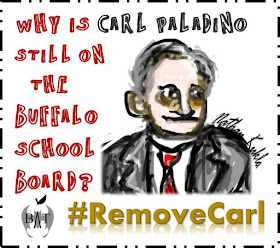
Special Nite Cap: Catch Up on Today's Post 12/24/16
How is Carl Paladino Still on the Buffalo School Board? -Badass Teachers Association



It's a telling sign that the boldest educational initiatives of the year came not from the chief education office or other state agencies but rather from advocates, parents, labor unions and others who decided that the best chance for helping Oregon students was to go directly to voters themselves.

It appears that some school officials, teachers and parents have assumed that religious expression of any type is either inappropriate, or forbidden altogether, in public schools.As our courts have reaffirmed, however, nothing in the First Amendment converts our public schools into religion-free zones, or requires all religious expression to be left behind at the schoolhouse door. While the government may not use schools to coerce the consciences of our students, or to convey official endorsement of religion, the government’s schools also may not discriminate against private religious expression during the school day.
The claim that public schools are hostile to Christians may rev up caucusgoers in Iowa, but there’s only one problem: It isn’t true.Truth be told, students of all faiths are actually free to pray alone or in groups during the school day, as long as they don’t disrupt the school or interfere with the rights of others. Of course, the right to engage in voluntary prayer or religious discussion does not necessarily include the right to preach to a captive audience, like an assembly, or to compel other students to participate.Visit public schools anywhere in America today and you’re likely to see kids praying around the flagpole, sharing their faith with classmates, reading scriptures in free time, forming religious clubs, and in other ways bringing God with them through the schoolhouse door each day.As for celebrating Christmas, students are free to say “Merry Christmas,” give Christmas messages to others, and organize Christmas devotionals in student Christian clubs.It’s true that some public school officials still misunderstand (or ignore) the First Amendment by censoring student religious expression that is protected under current law. But when challenged in court, they invariably lose.In fact, contrary to culture-war mythology, there is more student religious speech and practice in public schools today than at any time in the past 100 years.When politicians demonize the courts for banning God from schools, they count on public confusion about the First Amendment distinction between government speech promoting religion, which the establishment clause prohibits, and student speech promoting religion, which the free-exercise and free-speech clauses protect.The U.S. Supreme Court has never ruled that kids can’t pray in school. What the Court has done — and continues to do — is to strike down school-sponsored prayers and devotional exercises as violations of religious liberty.As a result of those decisions, school officials may not impose prayers, or organize prayer events, or turn the school auditorium into the local church for religious celebrations.Students, however, aren’t the government; they can — and often do — openly pray and share their faith in public schools.